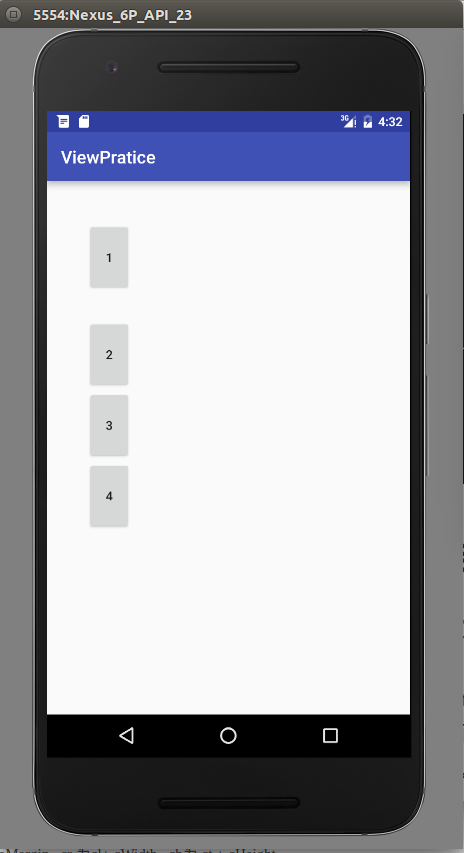具体到只计算第一个view的Margin。代码看看就好
@Override
protected void onLayout(boolean changed, int l, int t, int r, int b) {
int height = 0;
int count = getChildCount();
View child;
Log.e("ri", count + "");
child = getChildAt(0);
MarginLayoutParams params = (MarginLayoutParams) child.getLayoutParams();
int c1 = params.leftMargin;
int c2 = params.topMargin;
int c3 = c1 + child.getMeasuredWidth();
int c4 = c2 + child.getMeasuredHeight();
child.layout(c1,c2, c3,c4);
height = c4 + params.bottomMargin;
for(int i = 1 ;i < count;i++) {
child = getChildAt(i);
child.layout(c1, height, c3, height + child.getMeasuredHeight());
height += child.getMeasuredHeight();
}
}

总结
这是自定义ViewGroup的第一篇文章,自定义ViewGroup是比自定义View知识点更多,而且应用也更广泛。这篇只是简单的介绍了自定义ViewGroup中需要复写的方法,但是一般的viewGroup不会是这样的。上面的东西,用一个LinearLayout布局实现,然后include该布局更方便。一般viewGroup都需要我们来实现view事件的分发以及滑动的处理,接下来的文章,讲介绍滑动的多种方式。